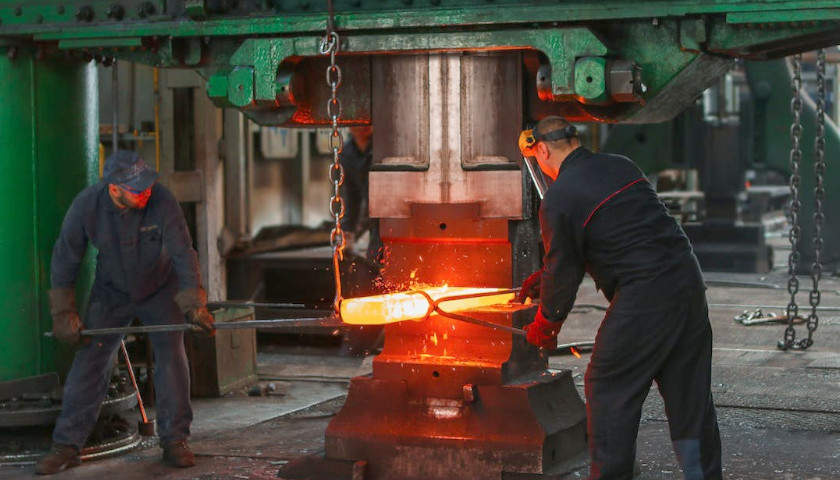by John Hugh DeMastri
Private companies added 127,000 jobs in November, missing investor expectations by more than 70,000 to post the worst result since January 2021, according to private payroll firm ADP and CNBC Monday.
The addition represented a sharp decline from the 239,000 new jobs reported by the firm in October. Industries that were most directly impacted by higher interest rates, such as construction, were hit the hardest by job cuts, while consumer-facing industries, such as hospitality, largely weathered the storm, according to ADP.
Manufacturing lost 100,000 jobs in November, a dramatic acceleration from the 20,000 jobs lost in October. The manufacturing industry contracted in November as demand plummeted, causing new manufacturing orders to decline at the fastest rate since 2009, excepting a steep contraction in May 2020 at the onset of the COVID-19 pandemic, according to S&P Global’s preliminary U.S. Producer Manufacturing Index (PMI) for November.
Breaking ADP Jobs Report
Private employers added 127,000 jobs in November
The street was looking for 190,000
Red Flags:
-77,000 professional
-100,000 manufacturing
I know the street hoping for weak BLS report on Friday but lets hope it not the exact same developments— Charles V Payne (@cvpayne) November 30, 2022
 “Companies are reporting increasing headwinds from the rising cost of living, tightening financial conditions – notably higher borrowing costs – and weakened demand across both home and export markets,” said chief business economist Chris Williamson of S&P Global Market Intelligence. “Skill shortages also remain a worrying constraint on expansion, but there is better news on supply chains, with supplier performance improving in November for the first time for over three years.”
“Companies are reporting increasing headwinds from the rising cost of living, tightening financial conditions – notably higher borrowing costs – and weakened demand across both home and export markets,” said chief business economist Chris Williamson of S&P Global Market Intelligence. “Skill shortages also remain a worrying constraint on expansion, but there is better news on supply chains, with supplier performance improving in November for the first time for over three years.”
Other industries with significant cuts were professional services, which lost 77,000 employees, and financial activities, which cut 34,000, according to ADP. Leisure and hospitality gained 224,000 jobs combined, per ADP, but Heritage Foundation economist E.J. Antoni told the Daily Caller News Foundation that these industries were still below pre-pandemic employment levels by around 1 million jobs, and that growth at this pace was unsustainable.
“Given that those industries are still ‘playing catchup,’ we can expect considerably more lag than usual,” said Antoni. “Overall employment already is a lagging indicator, and those industries which are still trying to fill pre-pandemic jobs may take even longer than normal to begin layoffs as the overall economy continues slowing down.”
ADP’s chief economist, Nela Richardson, characterized the situation differently, arguing that companies were not aggressively seeking replacements and that economic conditions were “stabilizing,” according to the payroll firm’s press release.
“Turning points can be hard to capture in the labor market, but our data suggest that Federal Reserve tightening is having an impact on job creation and pay gains,” Richardson said. “In addition, companies are no longer in hyper-replacement mode. Fewer people are quitting and the post-pandemic recovery is stabilizing.”
– – –
John Hugh DeMastri is a reporter at Daily Caller News Foundation.




